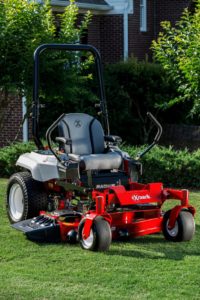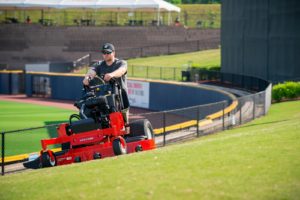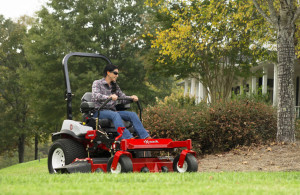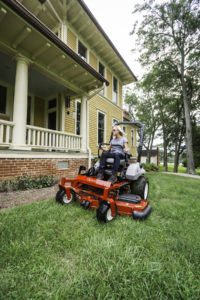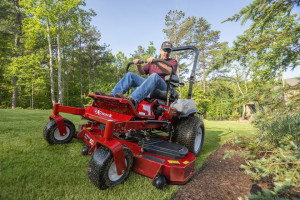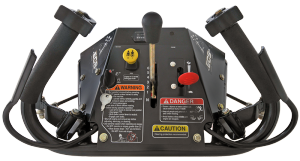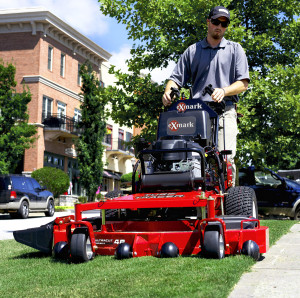Here at Exmark, we’re pleased to be launching a new zero-turn mower that combines everything you love about our existing models with increased comfort and a lower-cost design. Exmark has long been known as a company for great quality, durability, and productivity in yard design—with this new launch, we’re also reaching out to provide a simpler and more affordable lawn care solution.
It doesn’t matter whether you’re a homeowner with acreage and you’re looking for a higher-quality solution to your regular lawn maintenance, or if you’re a landscaping company in search of a versatile, affordable solution for your fleet—when you rely on the Exmark brand, you get quality equipment in a package you know and trust.
Exmark Radius Models
The new Radius is being released in three models: the E-Series, S-Series, and X-Series. In all three models, you can expect a low center of gravity, increased ergonomics, adjustable ROPS, and vibration controls—just to name a few of the features. The improved handling capabilities are ideal when you want a more precise cut, while safety interlocks and easily accessible control panels make it easier for you to manage your operations.
Perhaps best of all, we allow the three different models so you can match your individual needs to a price point that makes sense for you.
Radius E-Series:
- 5-inch cutting deck
- Ground speeds of up to 8mph
Radius S-Series:
- Operator seats with adjustable isolation technology
- 5-inch cutting deck
- Ground speeds of up to 9mph
Radius X-Series:
- Full suspension seat
- 5-inch cutting deck
- Ground speeds of up to 10mph
And because you’re purchasing equipment from the trusted Exmark brand, you also get the commercial engines and warranties we’re known for on all three of the Radius series mowers.
Why Radius?
With each new design and model of mower, we strive to create the balanced, comfortable ride you want with the precise cutting capabilities you need. To this end, we’ve worked hard on the Radius series to isolate just what it is that provides this perfect balance.
For comfort, the answer is in our seat isolation, specialty foam design seats, and Elastomeric Vibration Control. For precise and professional cutting, our Ultracut decks play a large role. Either way, you can look forward to better mowing capabilities at a lower price point than you’re used to.
Join the ranks of Exmark owners everywhere with the new Radius zero-turn series. When you want professional comfort and a professional finish—but you don’t want to pay the professional price—this mower provides the perfect solution.

